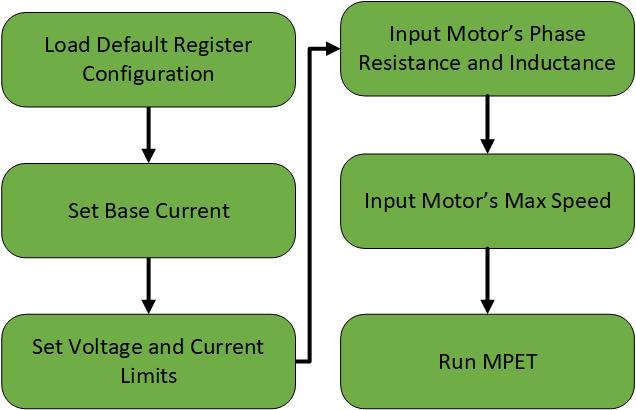SLLU374 November 2024 MCF8329A
4 Spinning Into Closed Loop
This section provides standardized steps to tune the MCF8329A's settings so that the motor can successfully spin-up and enter closed loop control.
The general steps to tune the MCF8329A's registers so the motor can spin-up and enter closed loop control are outlined in Figure 4-1.
 Figure 4-1 Essential Controls Flow
Chart
Figure 4-1 Essential Controls Flow
Chart